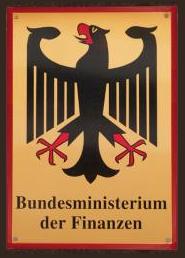 Some current German Concordats and what they do
Some current German Concordats and what they do
As well as the national concordat made with the Nazi regime, every German state has at least one pact with either with the Vatican or local Catholic bishops. Over 50 German concordats currently in force. Highlights are given from one of the 18 concordats with state governments (Länder), the Brandenburg concordat. Also a list of state concordats is linked to the texts in German.
After World War II Germany was set up as a federal state in order to keep it from again becoming a centralised war machine as it had been under both the Kaiser and Hitler. A further impediment to national unity was the deliberately overlapping competencies in key areas like finance between the national and state governments (Länder). This bureaucratic thicket led the Vatican to conclude concordats, with both the national government (the "Hitler concordat") and the postwar federated states (Länder). The fall of the Wall separating East and West Germany in 1989, added five new states to the federation, bringing the number up to 16 and setting off another round of concordats.
Concordat privileges: a few examples from the 2003 Brandenburg concordat
What do these dozens of concordats give the Catholic Church? Let's take as an example the 2003 Brandenburg concordat. The complete list of privileges, although tersely expressed, runs to a dozen pages, but this is what a few of its clauses do:
§1 confirms the 1919 agreement (by the Weimar Republic) to massive and unending subsidies to the Catholic Church. (Read more about these state subsidies or Staatsleistingen.)
§4 lets the Catholic Church teach religion in state schools. As a result the state must set up university training for these teachers and employ them everywhere in order to serve a mere 3% of the population.
§7 cements Catholic social work at the taxpayers' expense, enabling it to expand way out of proportion to the tiny percentage of Church members. (Take an inside look at these faith-based social services.)
§8 ensures that there are Catholic chaplains in hospitals, prisons, care homes, etc. This means that information about the religion of the patients is given to the chaplain and he ministers to them unless the patient objects. This opens the way for deathbed bequests to the Church from people who are terrified of the torments of Hell.
§11 cements dioceses, parishes and other Church institutions as public corporations. This brings the money and privileges that accrue to German "officials". It also makes all these Church institutions tax-free.
§15 obliges the state to pay a million euros every year for Church administration and the salaries of the priests, and another hundred thousand for building maintenance, with these payments to be increased after five years.
§17 cements the "church tax" which is collected by the government from all church members. (Read more about this "pay to pray" tax.)
§22 agrees to "constant contact" between the Church and the state on "matters of mutual interest", and for this purpose installs a Catholic Church watchdog ("authorised representative") in government. Furthermore, it stipulates a review of privileges in case some other religious group manages to extract even more, in order to maintain "equality". (Naturally, no mention of levelling down.)
§23 is the usual "friendship clause" of international treaties, by which the concordat can't be changed without the agreement of both parties. In practice this is a "ratchet" which keeps the Church's privileges from being reduced, only increased. However, as the legal expert Gerhard Czermak remarks, a treaty with a "country" of less than 600 "citizens" that is really nothing more than a religious organisation can hardly claim to be covered by international law. (Read how the Vatican uses its "statehood" to exert control at the international level.)
List of German concordats at the federal and state levels
(ignoring the raft of agreements with the German Catholic Church, not the Vatican)
The concordat texts are in German only, unless otherwise indicated, and the dates are for the signature of the concordats, not for their ratification (or for their enabling legislation, which introduces some of the concordat texts below).
At the federal (i.e., national) level:
Reichskonkordat: 20.07.1933 (legal continuity and further validity recognised and confirmed by the 26.03.1957 decision of the German Constitutional Court) [German/Italian without Secret Supplement] [English complete] Enabling legislation 18.09.1933
 At the state (Land) level:
At the state (Land) level:
Baden-Württemberg, 12 October 1932
Bavaria (Bayern), 29 March 1924
Berlin (with Berlin bishop, not Vatican), 2 July 1970
Brandenburg, 12 November 2003
Bremen, 21 November 2003
Hamburg, 29 November 2005
Hesse (Hessen), (with bishops, not Vatican), 4 July 1963, 4 September 1974
Lower Saxony (Niedersachsen), 26 February 1965, 21 May 1973, 8 May 1989, 29 October 1993
Mecklenburg-Western Pomerania (Mecklenburg-Vorpommern), 15 September 1997
North Rhine-Westphalia (Nordrhein-Westfalen), 14 June 1929, 19 December 1956, 26 March 1984
Prussia (Preuβen), 14 June 1929 Prussia is long gone, but parts of this concordat are embedded in the concordats of the states that succeeded it.
Rhineland-Palatinate (Rheinland-Pfalz), 14 June 1929, 20 November 1969, 15 May 1973, (with bishops) 18 September 1975
Saarland, 14 June 1929, 21 February 1975, 12 February 1985
Saxony (Sachsen), 2 July 1996
Saxony-Anhalt (Sachsen-Anhalt), 15 January 1998
Schleswig-Holstein, 12 January 2009
Thuringia (Thüringen), 11 June 1997
Sources (in German):
The Pontifical Gregorian University in Rome has a list of the 51 German concordats in force in 2013.
There is a website for the German Embassy to the Holy See (Deutsche Botschaft beim Heiligen Stuhl).
German Home Office gives a list of concordats at the federal and state levels with links to the documents: Bundesministerium des Innern / Verträge mit der katholischen Kirche (In Germany even individual schools may have their own concordats and these are not listed here.)







